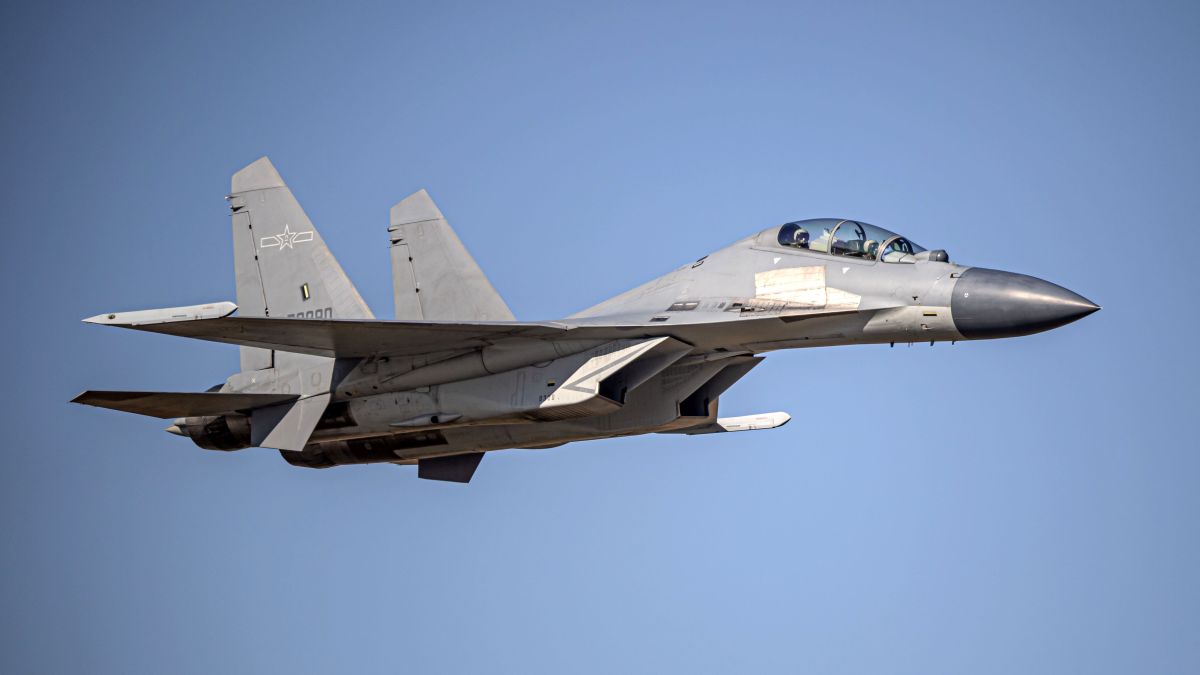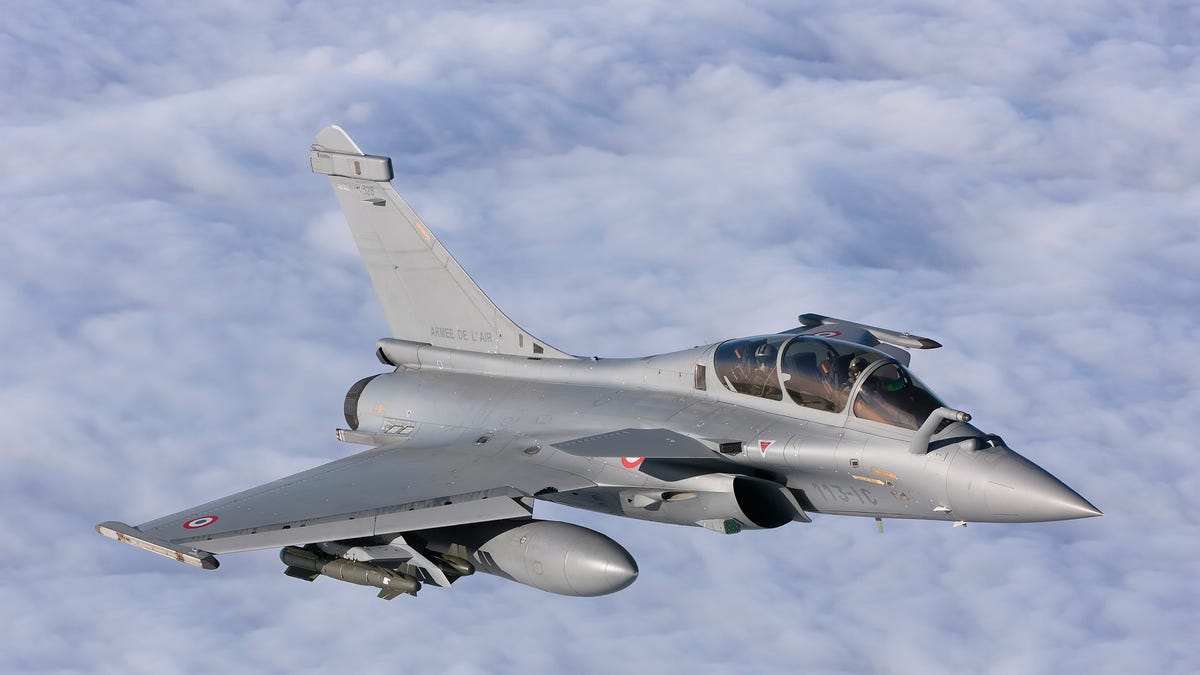Fighter Jet Photos - The F-16 Fighting Falcon (left), P-51D Mustang (bottom), F-86 Saber (top) and F-22 Raptor (right) fly in formation representing the four eras of the American fighter.
Fighter aircraft are fixed-wing military aircraft designed primarily for air-to-air combat. In a military conflict, the role of fighter aircraft is to establish air superiority in the battle space. Dominating the airspace above the battlefield allows bombers and attack aircraft to focus on tactical and strategic bombing of enemy targets.
Fighter Jet Photos

A key performance characteristic of a fighter is not only its firepower, but also its high speed and maneuverability relative to target aircraft. The success or failure of a fighter's efforts to achieve air superiority depends on many factors, including the skill of its pilots, the tactical soundness of its fighter deployment doctrine, and the number and performance of those fighters.
Blast Into The Weekend With 25 Incredible Fighter Jet Photos
Many modern fighter aircraft also have secondary capabilities such as ground attack, and some variants, such as fighter-bombers, were originally designed for dual roles. Other fighter designs are more specialized while still having a primary air superiority role, and these include the interceptor, heavy fighter and night fighter.
A giv type can be designed for specific combat conditions and in some cases for additional roles such as air-ground combat. Historically, the British Royal Flying Corps and Royal Air Force called them "Scouts" until the early 1920s, while the US military called them "follower" aircraft until the late 1940s. In the 1920s, Britain called them warriors
Among these, the fighter-bomber, reconnaissance fighter and strike fighter classes have dual role and fighter characteristics along with some other roles on the battlefield. Some fighter designs may be developed into variants that better perform other roles such as ground attack or unarmed reconnaissance. This may be for political or national security reasons, for promotional purposes or for other reasons.
Sopwith Camel and other World War I "Fighter Scouts" did a lot of ground attack work. In World War II, the USAAF and RAF generally preferred fighters to dedicated light bombers or dive bombers, and types such as the Republic P-47 Thunderbolt and Hawker Hurricane were no longer competitive as air fighters, relegated to ground attack. A number of aircraft, such as the F-111 and F-117, received fighter designations even though they lacked fighter capability for political or other reasons. The F-111B variant was originally intended for a fighter role with the US Navy, but was scrapped. This blurring follows the use of fighters from their earliest days for "strike" or "strike" operations against ground targets by hitting or dropping small bombs and interceptors. Multirole fighter-bombers such as the McDonnell Douglas F/A-18 Hornet are less selective than a wide range of specialized aircraft types.
Group Fighter Jet Flights
Some powerful fighter jets like US Grumman F-14 Tomcat, McDonnell Douglas F-15 Eagle, Lockheed Martin F-22 Raptor and Russian Su-27 are used as all weather interceptors and air superiority. Fighters were taken as they usually developed air-to-ground roles late in their careers. An interceptor is usually an aircraft designed to target (or intercept) bombers, often trading maneuverability for rate of climb.
As part of military nomenclature, different types of aircraft are usually given a letter to indicate their use, along with a number to indicate the specific aircraft. The letters used to denote fighter aircraft are different in different countries. In the English-speaking world, the "F" is usually used to denote a fighter (eg the Lockheed Martin F-35 Lightning II or the Supermarine Spitfire F.22), although in the US the "P" is used for a pursuit (eg the Curtiss P-40 Warhawk). A translation of the French "C" (Dewoitine D.520 C.1) is used for Chasseur while the Russian "I" is used for Istrebitel or Destroyer (Polikarpov I-16).
With the expansion of fighter types, the air superiority fighter emerged as an established player at the pinnacle of speed, maneuverability and air-to-air weapon systems—capable of outclassing all other fighters and establishing dominance in the skies above Earth. battlefield

An interceptor is a fighter specifically designed to intercept and intercept approaching enemy aircraft. There are two classes of interceptors: relatively light aircraft in a point defense role, built for quick response, high performance and short range, and heavier aircraft with more integrated avionics systems and designed to fly at night or all over water. And work in wind and long range. During World War I, this class of fighters was designated as an interceptor in 1929.
Russia's 'best Warplanes' Su 35 Flanker Es Are Heading To Iran; Us Says Deal In Exchange For Drones & Missiles
The equipment required for day flying may not be sufficient for flying at night or in poor visibility. The night fighter was developed during World War I with additional equipment to assist the pilot in direct flight, orientation and target finding. In 1915, a modified version of the Royal Aircraft Factory B.E.2c, the night fighter became a highly capable all-weather fighter.
A strategic fighter is a fast, heavily armed, long-range type that protects bombers as an escort fighter, conducts attack sorties as a patrol fighter, and conducts standoff patrols well away from its base.
Bombers are vulnerable because of their low speed, large size and poor maneuverability. The escort fighter was developed during World War II to act as a defensive shield between enemy bombers and bombers. The primary requirement was long range, which was met by several heavy fighters. However, they were underpowered and vulnerable, so as the war progressed, techniques such as drop tanks were developed to extend the range of more nimble conventional fighters.
The Petersen fighter is uniquely adapted for the ground attack role and is therefore able to defend itself during attack.
Japan Sends Fighter Jets To Philippines For 1st Time In Air Force Exchange
This section requires additional references for review. Please help improve this article by adding references to authoritative sources. Unsourced content can be challenged and removed. (October 2021) (Learn how and when to delete this template message)
Since World War I, achieving and maintaining air superiority has been considered essential to winning conventional wars.
Fighters were built throughout World War I to reduce the ability of enemy aircraft and dirigibles to gather intelligence through battlefield reconnaissance. Early fighters were very small and light by later standards, and most were biplanes built of wooden frames covered with fabric and had a maximum airspeed of about 100 mph (160 km/h). As control of airspace became more important to militaries, all major powers developed fighters to support their military operations. Between the wars, wood was often partially or completely replaced by metal tubes, and eventually aluminum pressure skin (monocoque) structures began to dominate.

In World War II, most fighters were all-metal monoplanes equipped with machine guns or artillery batteries, and some could reach speeds of 400 mph (640 km/h). Most fighters up to this point were single-engined, but several twin-engined fighters were built. However, they were found to be superior to monoplane fighters and were relegated to other roles such as night fighters equipped with rudimentary radar arrays.
Russia New Fighter Jet: Single Engine Stealth Fighter Details
During the war, turbojet engines replaced piston engines as the means of propulsion and increased aircraft speed. As the weight of turbojet jeans was much less than that of piston jeans, having two jeans was not considered a defect and depending on the need, one or two jeans were used. This in turn required the development of ejection seats to allow the pilot to escape and to cope with the high forces that the G-suits exerted on the pilot during maneuvers.
In the 1950s, radar was installed on day fighters because the increased range of air-to-air weapons meant pilots could no longer see into the future to prepare for adversaries. Subsequently, radar capabilities have greatly increased and are now the primary method of target acquisition.
The wings became thinner and swept back to reduce supersonic drag, which required new manufacturing methods to obtain sufficient drag. Shells were no longer sheet metal riveted to the structure, but milled from large alloy sheets. The sound barrier was broken, and after several false starts due to the necessary changes to the controls, the speed quickly reached Mach 2, where the aircraft could not maneuver enough to avoid the attack.
Air-to-air missiles largely replaced guns and rockets in the early 1960s, as both were believed to be useless at the speeds achieved, although the Vietnam War showed that guns still had a role to play. cannons. (usually in 20 and 30 mm (0.79 and 1.18 in) caliber) along with missiles. Most modern fighter jets can carry at least a pair of air-to-air missiles.
Most Expensive Fighter Jets In The World
In the 1970s, turbofans replaced turbojets and improved fuel economy as the last piston-driven support aircraft could be replaced by jets, making multirole combat aircraft possible. Honeycomb structures began to replace mill structures, and the first composite units appeared on low-pressure units.
US Air Force F-22 Raptor and F-35 Lightning II fighters over Florida's Emerald Coast
With continuous advancements in computers, defense systems have become more effective. To counter this,

Tornado fighter jet photos, jet fighter photos, fighter jet, photos of f 16 fighter jet, fighter jet toys, f 35 fighter jet photos pictures, typhoon fighter jet photos, fighter jet canvas, ngad fighter jet, jet-fighter, f-16 fighter jet photos, jet fighter pilots photos


0 Comments